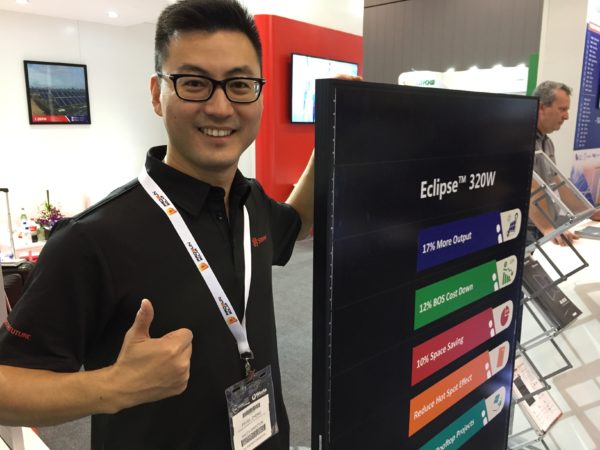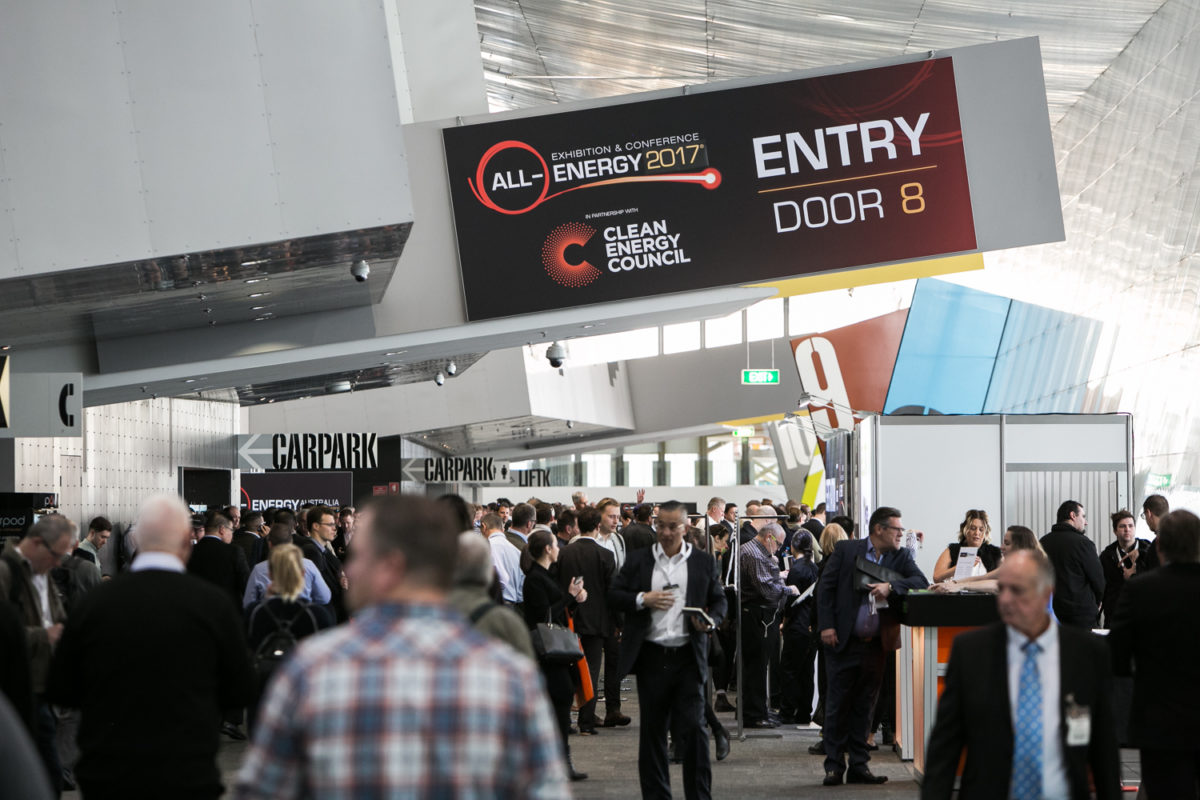For anyone attending the two-day event it was clear that mood certainly was high and that optimism was emanating from all solar market segments. Preliminary attendance figures confirm this, with organizers reporting that registrations showing that over 6,500 professionals attended the event, up from 4,600 the previous year.
A full house at the Plenary Session set the scene early at All Energy 2017. Victorian Energy Minister Liliana D’Ambrosio revealed some closely held details as to the state’s 650 MW renewable “mega auction” to a full house, with people being turned away from the 500-capacity room.
There were some early reports of truly astounding early attendee numbers, and pv magazine unwisely reported some of the early hype, but a figure representing in excess of 40% YoY growth is nonetheless an outstanding result.
Organisers reported to pv magazine that early on day one they were “blown away” by the early attendance, and while the show settled into its groove after the early surge, there was still a lot of positive feedback from attendees and exhibitors alike.
“The first day was relentless,” said Nino Nizic, the Managing Director of battery supplier Solarwatt Australia. “Compared to the last years the seminars would impact on attendance, but this year there was consistent high-level interest.”
On the module front, it was clear that some of the low tier two or even tier three producers that had attended in years past did not make the trip to Melbourne. In general, this is a sign of the market maturing and that tier one status is becoming more of a prerequisite for supply to the Australian marketplace.
Tristan Edis, from Green Energy Markets, noted that there are fewer reasons for wholesalers to turn to low tier module producers today, due to the highly competitive pricing currently being offered by the tier ones.
The downside to competitive pricing is that margins are slim for module suppliers, but this doesn’t mean they turn their back on the Australian marketplace. Given the steady performance of the rooftop segment, many foreign suppliers see Australia as a market in which long-term investment is justified, particularly in light of its maturity and the likelihood that demand will be ongoing.

Seraphim Solar has been active in Australia since 2011, and regional sales director PaVel Zheng reported that the best way to supply the market was to go through established distributor channels. “We don’t sell direct here,” said Zheng.
Seraphim reports that it sold a little over 80 MW of modules in Australia between 2011 and 2015, but that rate increased to 40 MW in 2016 and that is likely to be exceeded in 2017. The company is one of the only module makers to ship a shingled module into Australia. Seraphim’s Eclipse module can deliver 320 W in a monocrystalliine “all black” configuration, and 290 W in multi – and is now CEC certified.
This content is protected by copyright and may not be reused. If you want to cooperate with us and would like to reuse some of our content, please contact: editors@pv-magazine.com.









By submitting this form you agree to pv magazine using your data for the purposes of publishing your comment.
Your personal data will only be disclosed or otherwise transmitted to third parties for the purposes of spam filtering or if this is necessary for technical maintenance of the website. Any other transfer to third parties will not take place unless this is justified on the basis of applicable data protection regulations or if pv magazine is legally obliged to do so.
You may revoke this consent at any time with effect for the future, in which case your personal data will be deleted immediately. Otherwise, your data will be deleted if pv magazine has processed your request or the purpose of data storage is fulfilled.
Further information on data privacy can be found in our Data Protection Policy.